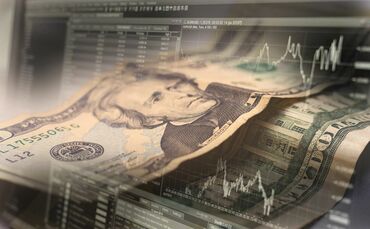
The currency’s share of global foreign exchange reserves has been on a gentle downwards trajectory since the millennium began, hitting its lowest level since 1995 during Q4 2020, according to data from the International Monetary Fund.
In the first years of this century, the dollar comfortably accounted for north of 70% of global reserves, but this has since fallen shy of 60%, sitting at 59.02% during Q1 2023.
Speaking to Investment Week, Michael Kelly, global head of multi-asset at PineBridge Investments, explained that this decline was due to shifting faith in the US dollar.
“Trust is effectively the bedrock of the financial system, governing what assets are considered safe or risky and driving the pricing of all assets,” he said, “Changes in the perception of trust can therefore drive significant changes in the behaviour of market participants and the performance of global markets.”
There were three key factors driving this change, according to Kelly: geopolitics, the fiscal state of the US government and inflation.
“The escalating use of financial sanctions by the US as a foreign policy tool, highlighted by recent asset seizures from Russia, arguably encourages countries to reduce their dependence on dollar-based trade,” he said.
The “concerning” fiscal state of the US government also raises questions for those looking in on the nation, with its “unsustainably high” debt trajectory that Congress is “too political polarised” to solve.
Lower than expected job creation in the US lifts hopes for ‘soft landing’
Kelly added that despite the Federal Reserve’s hawkish policy shifts over the past months, the delay in beginning to hike rates in response to rising inflation “allowed the genie to get out of the bottle, even if for a transitory period”.
“While not the only central bank which suffered a similar fate, the Reserve Currency’s central bank surrendered a two-decade record of low inflation as a result,” he argued. “This effectively devalues other nations confidence in the long-term inflation resiliency of the dollars they are holding in reserve.”
However, a key strength of the dollar is the lack of any viable alternative to the greenback as a reserve currency.
He argued the euro stands “a distant second” due to the “inadequate supply of high quality euro-denominated assets”, while China’s ambitions remain hampered by the nation’s strict capital controls and market that lacks the depth or liquidity of the US.
“Absent an alternative, the dollar’s dominance should persist for the foreseeable future, along with a gradual erosion of trust in its safety without significant changes,” he said.
Dollar-denominated impact
While Chris Metcalfe, CIO at IBOSS Asset Management, argues timing currency movements is a risky and ultimately nonsensical ambition, there are plenty of short-term movements that an be tempered by diversification.
“Although currency is overall a zero-sum game, there are times when it is prudent to take advantage of extreme positions,” he argued.
“Up until September of last year, [the price of the dollar] was a huge benefit, and the strength of the dollar helped insulate sterling investors from some of the worst market falls during the first nine months of 2022.
“However, since September 2022, the circumstances have changed, and investors overly concentrated in dollar-denominated assets have seen the currency tailwind quickly turn into a currency headwind.”
US loses Fitch AAA rating following debt ceiling turmoil
Ryan Myerberg, partner and portfolio manager at Brown Advisory, has utilised the resilience of the US economy against “clear weakness in other economies”.
“We have no active risk on the dollar in our portfolio currently, but we are taking advantage of Fed policy in other ways, for example in Japanese bonds,” he explained. “The Bank of Japan remains the dovish outlier in the fraternity of developed market central banks despite the country experiencing levels of inflation not seen since the early-1980s.
“Our anticipated recalibration from the BOJ in loosening its yield curve control stance in July has come to fruition which has pushed longer data yields in Japan higher, and we have been happy to monetise that view by being short the ten-year part of the yield curve.”
Investor option
Juliet Schooling Latter, research director at FundCalibre, explained that whether investors realise it or not, clients were likely to be exposed to currency risk in equity funds, although this is likely to have been hedged out across bond funds.
For investors seeking US dollar exposure, she recommends the Invesco US Treasury Bond 7-10 Year UCITS ETF as the simplest way to achieve this.
“In times of extreme stress, the US dollar tends to do well, and yields tend to fall (as bond prices rise) making this the perfect risk-off hedge to protect a portfolio,” she said.
US debt ceiling crisis shakes bond market
For those after hard currency bonds, Schooling Latter, highlighted the M&G Emerging Markets Bond fund as a good access point, although she caveated that a strong dollar typically spells bad news for emerging markets.
Investors seeking USD exposure via equities can achieve this across the US small- and mid-cap spectrum with Schroder US Mid Cap, which is managed from New York and stands by a different investment process: “When investing in US equities, we do not ‘go big or go home’, but instead ‘go mid and do not overbid’.”
On a global view, Schooling Latter suggested Rathbones Global Opportunities, which currently has a 68.7% weighting to US stocks.
“Rathbone Global Opportunities is a global growth fund looking to buy innovative companies that have flown under the radar of the main market,” she said. “It aims to identify global themes and invest in them early.”




